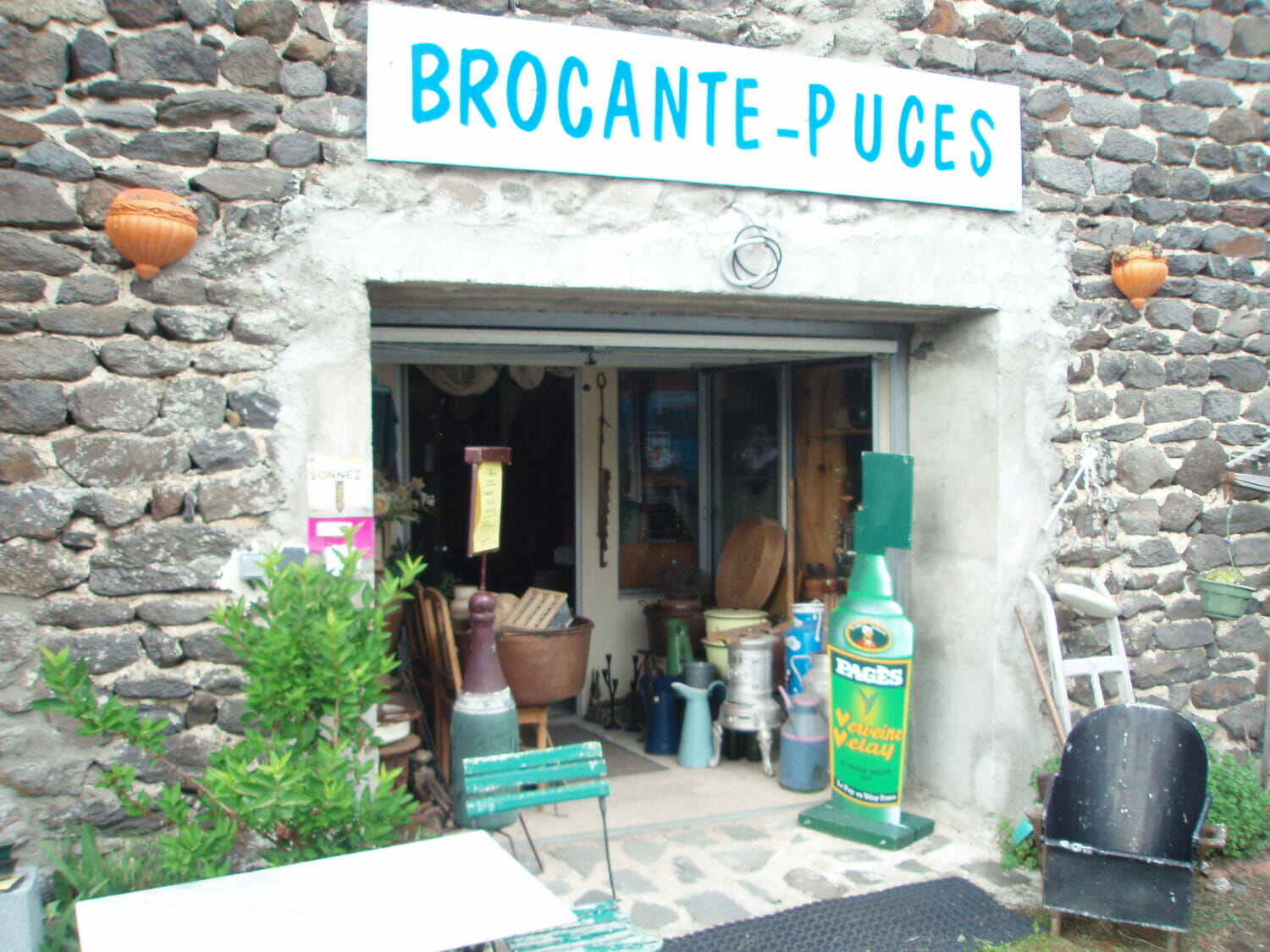
A bright September morning in Le Havre with Graham, emerging from the cavernous ferry garage, heading for the Mediterranean. Once over the Tancarville Bridge that sails over the Seine we traveled on National roads, past villages with steep slate roofs and needle-sharp church spires, past large tan and white cows, half timbered barns and stacked woodpiles out in grassy orchards. Graham was at the wheel, and, as we drove through little towns and past converted farm buildings, he needed to clear a plan of action with me: “When you want to stop, say “Stop,” don’t just point and shout “Brocante!”
We pulled in for coffee in Leurey, with croissants from the boulangerie up the street. Printed on the soft, rustling boulangerie paper were typical images of baguettes and sheaves of wheat, but also various salutary idioms involving bread, including this one: “Offrir l’amitié a qui veut l’amour, c’est donner du pain a qui meurt du soif”. Offering friendship to someone who wants love is like giving bread to someone who is dying of thirst.
Then straight roads through allees of trees, with either side wide open fields of maize, punctuated with the great plumes of irrigation pumps, spires and clusters of roofs in the distance, battalions of pylons and parades of wind turbines. Then Chartres cathedral on the far, flat horizon.
At Orleans we crossed the Loire with a glimpse of old stone houses, quais and an ancient stone bridge. On south through deep forests and over wide green shaded rivers, past the tall gates of chateaux and sunflowers with brown faces hanging down. The Loire marks the divide between north and south. Now we could really start anticipating roman tiled roofs and cypress trees.
We stopped overnight at La Troliere, a chambre d’hote in the middle of France. As we turned up the lane towards the house an eagle rushed down on a rabbit in the verge. The house was set amongst old chestnut trees, with a large farm yard behind it. The property had been in her husband’s family since 1768, Madame said. She had wanted to be an antiques dealer when she was younger, she told me, but her new husband had been against this. He had consoled her by saying “Eclatez vous dans la maison” – Express yourself with this house. She had had plenty of antiques to choose from and had fashioned many beautiful rooms. “You have seen my kitchen?” she asked leading me through to a large, beamed room newly painted in blue – and pointed to a couple of Farrow & Ball tins of paint in the corner!
Next day the Sat Nav took us on an obscure route via narrow lanes, through a village called Soupir (Sigh), and on to another called Herisson (Hedgehog). The Aumance river curved around the village, bordered by a wide promenade beneath plane trees. In this pretty village, opposite the Mairie, to my utter happiness, we found a café in a stone walled courtyard, with a Brocante next door. As I looked through the tastefully arranged shop with beamed ceiling and French windows out onto a garden, the owner was happy to talk about his village. it was a place for cultural events, he said, and even a Herisson whisky was produced. (It is as good as English champagne….., he said with a raised eyebrow). In this area you could still buy a chateau for 500,000 euros…..
Graham was on his second café creme when I arrived in the courtyard with two large boxes of heavy, hand made wine glasses and fine monogrammed napkins. Such beautiful music was playing in the background. Madame took me inside and showed me the CD of Cesaria Evora. “She died last year,” said Madame. “Her voice always touches my heart.”





